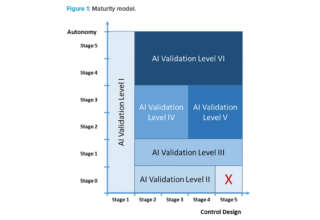Sir Martyn Lewis and I met back in April to discuss the impact of technology on humanity at The Club at The Ivy in London. It was a well-received debate, so we reconvened to tackle a new subject last month. As education is one of the key industries being disrupted by technology, and a subject both Martyn and I feel passionate about, it felt apt to put it on the agenda for the evening’s discussion.
The ‘Fourth Industrial Revolution’ will see an increase in workforce automation. The Organisation for Economic Co-operation and Development (OECD) estimates that over the next 10 to 20 years, “14 percent of jobs are at high risk of being fully automated, while another 32 percent at risk of significant change”. It is imperative, therefore, that education systems adapt to ensure students are equipped with the right skills to survive in our changing world.

While there are many different theories on what and how students should learn, I believe there is no escaping the fact that students will need to be prepared to continuously learn and upskill— people will be learners for life, rather than a set period. I also believe technology is playing, and will continue to play, a key role in the way skills are acquired and developed for the 21st Century workforce. So, it is no surprise that the Education Technology (EdTech) industry is set to reach $252 billion by 2020, growing at a 17% annual rate.
Technology presents a wonderful opportunity to re-shape 21st-century education because it’s popular with students and teachers. One study in the US has shown that the introduction of technology makes 87% of students more likely to attend class and 72% of them more likely to participate. While a study by Smoothwall found that 96% of teachers believe technology has had a positive impact on the way children participate and learn in lessons.
Take augmented reality for example. The technology can be used to augment field trips by adding a layer of information and interactivity to the activity, help with foreign language studies by translating text, or bring subjects such as coral reefs and electromagnetism to life through apps like Google Expeditions. Considering all the applications and appeal of the technology, it’s no wonder that the New Jersey Institute of Technology (NJIT) reports “augmented reality has the potential to revolutionize learning in primary and secondary schools more than any other technology has done in the recent past”.

Orboot is a 10-inch globe and companion app (iOS or Android) that lets kids check out the world and complete activities in an augmented reality environment.
ORBOOT
If we look at virtual reality, we can see great benefits in using the technology—from its ability to enhance recall through to its capacity for building empathy. These advantages position VR as a unique learning aid.
There are many companies that are focusing on driving positive change in education through technology. Martyn and I asked a couple of people doing great work in this space to join the discussion. First up was Seth Andrew.
Seth is a serial social entrepreneur, having founded Democracy Prep, Democracy Builders, REV, and Washington Leadership Academy. He then led policy and partnerships for the world’s largest network of schools for families earning less than $2 per day. Previously, Andrew served as the Senior Advisor for Education Technology in the Executive Office of President Barack Obama where he helped launch Computer Science for All, Vote.Gov, and #FutureReadySchools as well as helping to make the White House accessible in Virtual Reality for the first time in American history.

Seth Andrew, the founder of Democracy Prep in Harlem.
PIOTR REDLINSKI FOR THE NEW YORK TIMES
Seth is a leading advocate for the power of technology to transform the fundamentals of global schooling. In addition to helping buildthe dozens of schools in the US, and hundreds in Africa, he founded Washington Leadership Academy as a lab school to explore these new ideas and was awarded a $10m prize from the XQ: Super School Project to build out that new model. What goes into this ambitious vision? Seth wanted to see WLA build a virtual-reality high school chemistry lab and require every student to learn computer science in all four years of high school, plus build meaningful digital projects, including content in XR.
As this vision comes to fruition, Seth explained to the room: “no child will be burned, no teacher will have to clean up a chemical spill, and access to a state-of-the-art science lab will cost just a fraction of the bricks and mortar version.” In addition to these practical benefits, there are pedagogical benefits as well: “We can drill down into the valence of each individual atom to see electrons spinning in a way you can’t in a regular laboratory.” The big goal is to inspire students to use the tools of technology to build the future world they will inhabit. That’s why computer science is a required course and students will graduate with the technical skills to code their own projects in Virtual Reality among other mediums.

WASHINGTON LEADERSHIP ACADEMY
Tej Samani was also invited to join the conversation. Tej is the founder of Performance Learning, a British company that, for the last nine years, has helped thousands of learners boost their exam and classroom performance through its machine learning platform. Tej dropped out of school aged 16 to pursue a tennis career but hung his racket up at 21 to become the Founder of Performance Learning.

Tej speaking at the event at The Club at The Ivy.
REWIND
Deployed from primary education (starting in Year 5) through to further and higher education, the digital platform and assessments accurately predict, monitor and evaluate learner performance with a core focus on mental health and attitudes and behavior towards learning.
Lessons are delivered through a combination of online, face-to-face, and cloud-based learning via trained Performance Learning coaches. From how they sleep to how they retain information, users get to understand more about themselves so they can improve how they learn and maximize potential.
Tej explained how the platform worked: “The application’s algorithm quietly and perpetually learns about the student and each time ensures it delivers the most appropriate learning pathway to ensure the student not only learns but wins. Learners interact with curriculum-specific learning journeys, ranging from ‘Easy’ to ‘Genius’ mode, in a fully gamified experience.”
He went on to explain that users have to beat the AI system in order to progress: “The more the users play, the smarter the system becomes. It begins to predict core metacognitive and cognitive skill gaps within the user, encouraging the user to partake in training modules within the system to improve.”

Topcliffe School Birmingham
©2017 ANDREW PARSONS / I-IMAGES
Speaking about education and technology in general, Tej said: “Our education system has needed significant progression to just keep up, let alone stay ahead of the leaps in technology we are experiencing. While technology will always struggle to replace an effective teacher, it can help develop effective teaching as well as deliver tailored, personalized education to learners of all standards, irrespective of how complex their barriers to learning are. The advancement in education technology can bring in areas such as grade prediction, performance tracking, and personalization—this will help to ensure that the most critical stage of a person’s life is delivered with accuracy, engagement, and foresight”
It is clear technology can be leveraged to create an engaging and personalized environment and open up opportunities for deeper learning— technology should be used as an opportunity to acquire more knowledge, not an excuse to know less. Furthermore, students no longer have to be confined to the classroom or forced into a one-size-fits-all system. However, technology is not the answer to everything—we still need classroom leaders and students with an appetite for learning.
[“source=forbes”]






